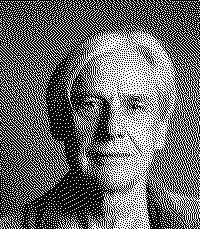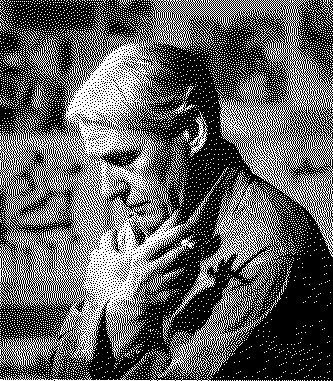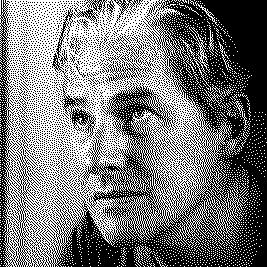Artists/Willem de Kooning
Fast Facts
Gestural Abstraction
De Kooning was known for his vigorous and gestural brushwork, which was a hallmark of the Abstract Expressionist movement. His paintings often featured energetic, sweeping strokes that conveyed a sense of movement and spontaneity. This dynamic style is evident in works like "Excavation" (1950), which features a complex interplay of lines and colors that guide the viewer's eye across the canvas without a single focal point (The Art Story) (MoMA).
Use of Charcoal and Mixed Media
De Kooning frequently used charcoal to sketch outlines on his canvases, which he would then paint over, leaving traces of the charcoal visible. This technique allowed him to continuously revise his compositions, adding and subtracting elements as he worked. He also incorporated unconventional materials like house paints, enamel, and commercial oil paints, mixing them with traditional artist's paints to achieve varied textures and effects (Hirshhorn Museum) (The Art Story).
Integration of Figuration and Abstraction
Unlike many of his Abstract Expressionist peers, de Kooning often blended figurative elements with abstraction. His "Woman" series, created in the early 1950s, is a prime example, where the distorted and fragmented figures of women emerge from abstract backgrounds. This combination of the human form with abstract expressionist techniques was both controversial and influential, challenging the boundaries between abstraction and representation (MoMA) (Artsy).
Influence of Historical and Contemporary Art
De Kooning drew inspiration from a wide range of historical and contemporary sources, including the works of Rembrandt, Cézanne, Picasso, and Matisse. He also absorbed influences from his surroundings and daily life, which he referred to as being a "slipping glimpser," capturing fleeting moments and integrating them into his art (Artsy) (Smithsonian American Art Museum).
Evolution of Style and Techniques
Throughout his career, de Kooning's style evolved significantly. In his later years, he experimented with more fluid and lyrical compositions, using lighter colors and looser brushwork. This evolution reflects his constant exploration and willingness to push the boundaries of his artistic practice, resulting in a diverse body of work that spans several decades (MoMA) (Hirshhorn Museum).
Biography



Willem de Kooning, born in Rotterdam, the Netherlands, on April 24, 1904, emerged as a seminal figure in the American art scene, particularly within the Abstract Expressionist movement.
His journey began in a divided household; after his parents divorced in 1907, de Kooning lived with both parents at different times during his early life. He left school at a young age to apprentice in a commercial art firm, supplementing his education with evening classes at the Academie van Beeldende Kunsten en Technische Wetenschappen, now known as the Willem de Kooning Academie. In 1926, de Kooning stowed away to the United States, setting the stage for his eventual acclaim in the New York art world.
In the United States, de Kooning initially found work in various odd jobs while nurturing his artistic talents. His formative years in New York were influenced by encounters with other modernist artists, such as Stuart Davis, Arshile Gorky, and John Graham, who collectively impacted his evolving style. By the late 1930s, de Kooning's engagement with the Federal Art Project of the Works Progress Administration signified his commitment to full-time artistic endeavors, despite not having American citizenship at the time.
De Kooning's marriage to Elaine Fried in 1943 was both a personal and professional alliance, fraught with challenges yet profoundly influential on his work. Their relationship, characterized by mutual artistic respect and personal tumult, played a crucial role in de Kooning's development as an artist. His early work, influenced by Gorky's surrealism and Picasso's cubism, gradually paved the way for his signature abstract expressionist style, which he refused to confine within the boundaries of any single artistic orthodoxy.
By the late 1940s and early 1950s, de Kooning, alongside peers like Jackson Pollock and Franz Kline, began to gain recognition for their contributions to what would be known as Abstract Expressionism. This period marked a significant departure from more traditional forms of art, with de Kooning playing a key role in the movement's evolution. His acclaimed "Women" series in the 1950s, though controversial, underscored his willingness to explore and challenge artistic norms.
De Kooning's relocation to East Hampton in 1963 introduced new elements into his work, reflecting the tranquil yet dynamic landscape of his surroundings. Despite his advancing age and eventual struggle with Alzheimer's disease, de Kooning continued to experiment with form and color, leaving behind a legacy of innovation and resilience that shaped the trajectory of 20th-century art. He remained active in the art world until the late stages of his life, passing away on March 19, 1997, at the age of 92.
Throughout his life, de Kooning's work was characterized by a continuous exploration of abstraction, figuration, and the dynamic relationship between the two. His ability to evolve stylistically while maintaining a distinct, expressive approach to painting established him as a pivotal figure in American art. His contributions were recognized with numerous awards, including the Presidential Medal of Freedom in 1964, and his works are held in high esteem within major art institutions worldwide (dekooning) (Wikipedia).
Importance
Willem de Kooning's significance in the art world can be seen through various facets of his career and contributions:
Foundational Role in Abstract Expressionism
De Kooning was a central figure in the Abstract Expressionism movement, known for his action painting style. This movement marked a significant shift in the art world, moving the center of the avant-garde from Paris to New York after World War II (MoMA).
Innovative Techniques and Styles
He was renowned for not disguising the process of his painting's making, using methods such as tracing shapes onto paper and then onto the canvas. This technique contributed to the complex layering and sudden shifts in his compositions, making him stand out even among Abstract Expressionists, who were known for their spontaneity (The Art Story).
Contributions to Figurative and Abstract Art
De Kooning continuously explored the dynamic between figurative and abstract art. His works, especially the controversial "Women" series, pushed the boundaries of both styles and remain subjects of study and admiration (The Art Story).
Impact on Future Generations of Artists
His approach to painting, especially his use of black and white enamel household paint for his abstractions, influenced not just his contemporaries but also future generations. His work paved the way for artists to explore new methods and ideas, contributing to the evolution of modern American art (Smithsonian Magazine).
International Recognition and Legacy
De Kooning's work received significant recognition during his lifetime, including selection by the director of MoMA for the Venice Biennale, marking a pivotal moment in acknowledging American modernists on the international stage. His legacy continues to be celebrated, with his influence evident in the works of subsequent artists and movements, including some Pop Artists (Smithsonian Magazine).
Technique
Willem de Kooning's painting technique evolved significantly throughout his career, marked by a blend of traditional and unconventional methods, as well as a broad range of materials that contributed to the unique visual effects in his works. Here's an overview based on findings from several sources:
Layered Approach and Material Use
De Kooning often began his paintings with preliminary drawings, upon which he would block in background rectangles, applying different colored paints in stages to build up the paint layers distinctly. This process involved significant revisions and an extended working period on each layer, contributing to the depth and complexity of his backgrounds. Interestingly, for the figures, he employed a more immediate handling of materials, mixing paint directly with charcoal and using tools like metal scrapers for application, creating a dynamic interplay between figure and ground (Hirshhorn Museum).
Charcoal Outlining
A characteristic aspect of de Kooning's work was his use of charcoal to outline and detail his compositions. This technique allowed him to reposition and adjust the forms on his canvas fluidly, contributing to the complex layering and shifting perspectives that animate his paintings. Unlike many of his contemporaries who eschewed pre-planning for spontaneity, de Kooning embraced a method that combined careful planning with an appearance of impulsiveness (The Art Story).
Unconventional Materials
De Kooning's experimentation extended to the materials he chose, often incorporating commercial oil paints, household enamels, and non-art products to achieve desired textures and effects. His paintings from certain periods show the use of materials like quartz, fragments of brown glass, and even plaster of Paris mixed into his paints. These materials, alongside his practice of adding charcoal and palette scrapings to the paint surfaces, contributed to the rich, tactile quality of his work (Hirshhorn Museum).
Application Techniques
His technique for applying paint varied from dense, sculptural layers to diluted washes that flowed across the surface, staining underlying paints. De Kooning manipulated paints of different consistencies with an array of tools, including brushes, palette knives, and scrapers, to create compositions that teetered between figuration and abstraction. This method highlighted his capacity to evoke both the materiality of the paint and the dynamism of his subjects (Hirshhorn Museum).
Evolution of Medium
In the 1960s, de Kooning began using supports primed with smooth, opaque white grounds and mixing pigments with large amounts of white and a more fluid paint medium. This shift allowed for quicker brushwork and a lighter, more reflective quality in his paintings. Reports suggest he even experimented with adding safflower cooking oil to his paints to prolong their wetness, enabling longer work periods on each painting (Hirshhorn Museum).
Scientific Study of Materials
The first systematic study of de Kooning's creative process using scientific examinations of his pigments, binders, and supports has provided new insights into the materials and techniques he used. This research has confirmed some of the artist's idiosyncratic methods and revealed previously unknown details about his approach to painting (Getty Art).















